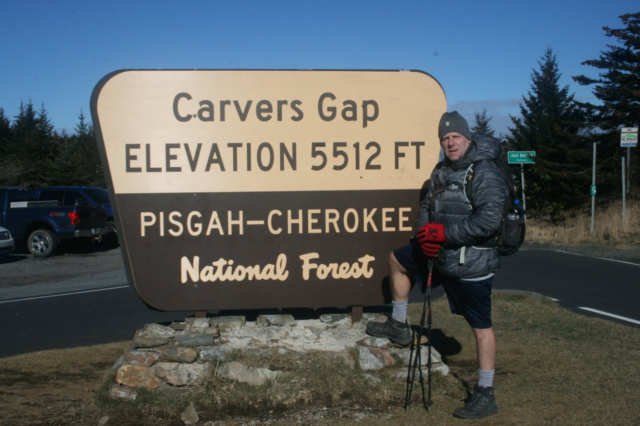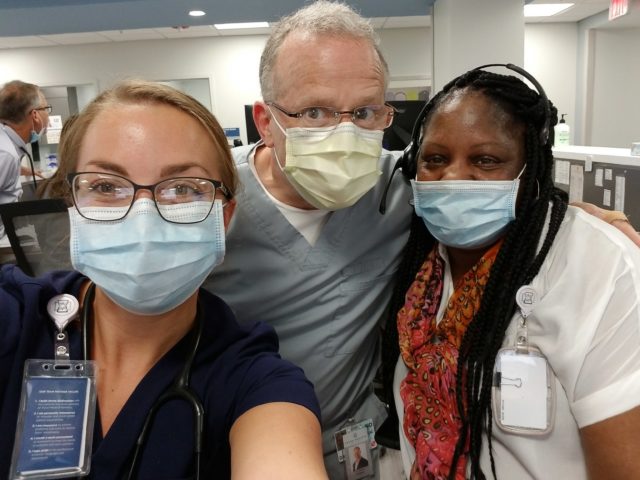
Cardiologist Dr. David Framm keeps heart-healthy by hiking.
Are you feeling like you’re emerging from the COVID-19 pandemic an entirely different person than you were before the pandemic? You’re not alone.
Tryon Medical Partners cardiology specialist Dr. David Framm sees patients every day who are struggling to come out of “COVID hibernation.” His expertise as a cardiologist is on noninvasive cardiac issues (hypertension, arrhythmias, heart failure, etc.) but recently his focus has shifted to a different kind of problem: health issues due to a sedentary lifestyle during the COVID-19 pandemic and a rough winter of flu, RSV and countless other viruses.

“The world has changed over the past three years. Nobody has come through the pandemic chaos without changing,” Framm emphasizes. “Like a caterpillar in a cocoon, people are expecting to come out as butterflies but falling short. Instead, we’re coming out of a period of social isolation, potentially with health issues or long COVID, and some degree of psychological trauma. But we need to come to terms with this and move forward.”
So, how can we move forward? Dr. David Framm provides several helpful tips and recommendations.
How do I know I need to “come out of hibernation”?
Unless someone is severely ill, COVID-19 has minimal impact on the heart. However, the social isolation and inactivity of COVID-era lifestyles can have a massive impact on heart health. What you may not know is that being sedentary for a week physically ages you 10 years. So, when should we begin to be concerned? Dr. Framm suggests looking for signs of:
- Overt depression – persistent feelings of sadness or loss of interest in pleasurable activities may indicate depression. Studies have shown that exercise, or even just exposure to the outdoors, will decrease symptoms of depression.
- Fatigue – fatigue can trap people in a cycle: because they are so tired, they don’t exercise, which slows their metabolism, which makes them more tired. Exercise can help break this cycle.
- Shortness of breath – feeling short of breath during your breath during daily activities may indicate deconditioning and the need to get an exercise routine
- Weight gain – steady weight gain might be a product of not burning enough of the calories you consume, which can be balanced with exercise.
- Any symptoms of long COVID – Long COVID often renders people exhausted, which can decrease desire and capacity for exercise.
How can I get back into an exercise routine?
Dr. Framm recommends the following steps:
- Visit your doctor. Before undertaking an ambitious exercise plan, start by seeing your doctor. It’s important to make sure whatever exercise plan you begin won’t threaten a heart attack or injury.
- Pursue your passions. If you like to dance, think about a dance class. If you love being outdoors, consider hiking or mountain biking. Even dancing with your spouse in the kitchen can bring immense benefit to your overall health.
- Call a buddy. Get together with a group of people who can provide accountability, encouragement and stave off loneliness.
- Acknowledge any obstacles and overcome them. COVID-19 has changed our world. Acknowledge the obstacles that are preventing you from exercising (pool closures, fear of crowded gyms, etc). Think about what you’re comfortable doing and work within that framework.
- Start small. Once you have found something you like doing, do it regularly, even if it’s initially only 20 minutes a few times a week. Ultimately you can work your way up to 20 minutes of mild continuous shortness of breath, 5 days a week, which gives you metabolic benefit.
“Think about how you want to feel in 10 years,” Dr. Framm encourages. “You only need to do 20 minutes of exercise that elevates your heart rate to brighten your future outlook. If you don’t act now, you won’t be where you want to be then.”

